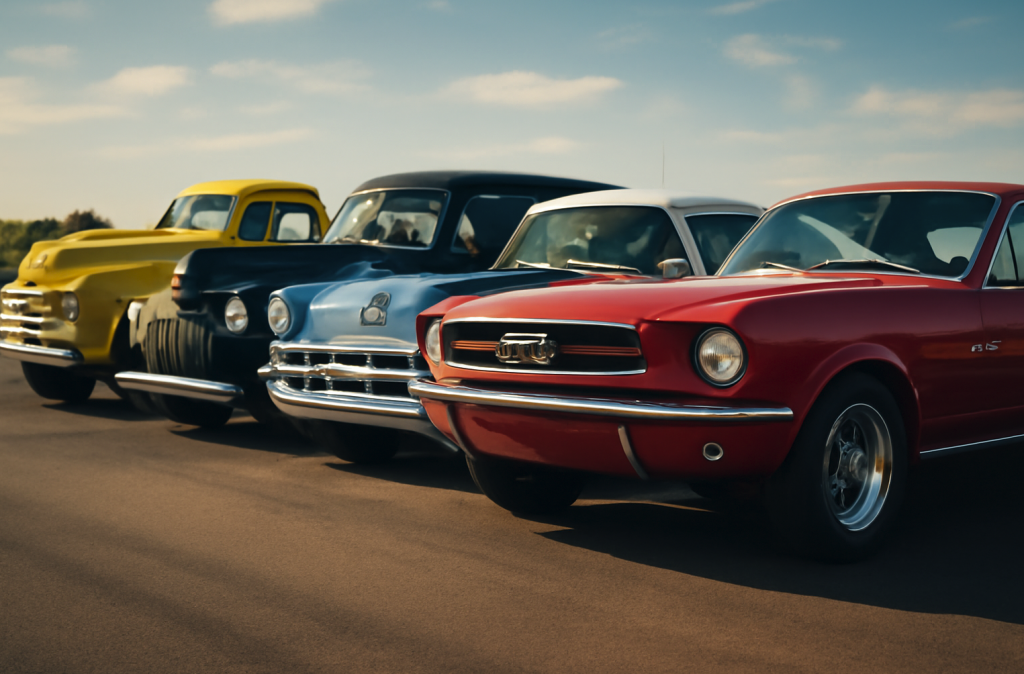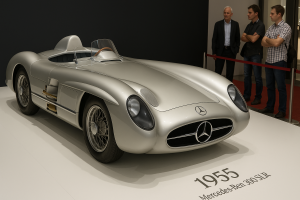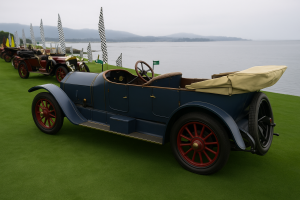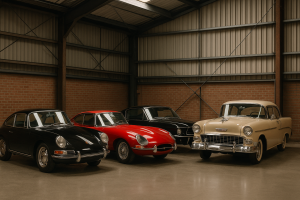
Classic cars have long been cherished as timeless treasures, representing a connection to the past and showcasing automotive artistry. From unique classic cars that stand out at shows to the sleek lines of classic sports cars, enthusiasts continue to seek ways to preserve these machines for future generations. But as we look to the future, how are modern technologies shaping the restoration and preservation of old classic cars? In this article, we’ll explore how innovations in restoration, electric conversions, and new materials are transforming the classic car industry.
The Evolution of Classic Car Restoration
Restoring classic cars is a meticulous process that has traditionally relied on craftsmanship, attention to detail, and sourcing rare parts. This work was often carried out by hand, requiring significant knowledge of older mechanical systems and an appreciation for the vehicle’s original design. However, the restoration process is rapidly evolving with the introduction of new technologies.
Traditional Restoration Methods
In the past, restoring vintage cars was a slow and labor-intensive process. Mechanics and bodywork experts would search high and low for rare classic cars parts, sometimes scouring junkyards or relying on specialized suppliers to track down discontinued components. Rebuilding an engine, restoring a body to its former glory, or finding original paint could take months, if not years.
The Rise of Technology in Restoration
With the advent of digital tools and 3D printing, the restoration process has become more efficient and precise. Today, affordable classic cars are easier to maintain, as 3D printing technology allows restorers to reproduce parts that were once impossible to find. Classic luxury cars, which demand a higher level of attention to detail, now benefit from digital blueprints and software simulations that assist restorers in planning and executing their work with a higher degree of accuracy.
3D printers can create complex parts, including engine components and body panels, which allows for the restoration of cool classic cars without sacrificing authenticity. These innovations not only speed up the restoration process but also make the preservation of classic American cars more viable.
Electric Conversions: Breathing New Life into Classic Cars
One of the most significant trends in the classic car industry today is the shift toward electric conversions. As environmental concerns grow and the popularity of electric vehicles increases, many owners of old classic cars are opting to replace their combustion engines with electric drivetrains.
The Rise of Electric Classic Cars
The electric vehicle (EV) market is booming, and it’s no surprise that some enthusiasts are keen to merge the nostalgia of classic sports cars with modern electric technology. The electric conversion trend is especially popular among owners of ideal classic cars who want to retain their vehicle’s vintage look but prefer the reliability and performance of modern technology.
Converting vintage cars to electric power allows owners to enjoy the sleek designs and driving experience of the past without worrying about costly fuel or frequent maintenance. Not only do these cars become more eco-friendly, but they also benefit from enhanced performance, including smoother acceleration and improved handling, which makes them more enjoyable to drive.
Notable Examples and Success Stories
Some high-profile examples of electric classic car conversions include the Jaguar E-Type Zero, which combines the iconic styling of a classic Jaguar with a cutting-edge electric motor. Likewise, many owners of cool classic cars are choosing to convert their vehicles using kits that include an electric motor and battery pack, making it easier for them to breathe new life into their classic American cars.
While the process of converting a rare classic car to electric power can be expensive, many consider it a worthwhile investment. It allows them to preserve the vehicle’s legacy while benefiting from the advantages of a modern drivetrain. Though it may spark debates about the purity of such conversions, the reality is that it offers a sustainable future for these treasured machines.
Digital Tools and Technologies for Car Preservation
As the classic car industry embraces new technologies, car preservation is becoming more sophisticated. No longer do classic car owners have to rely solely on physical archives and handwritten logs to track their vehicles’ histories. Digital tools are transforming the way these cars are preserved.
Advanced Diagnostics and Virtual Restoration
Modern diagnostic tools, such as OBD2 scanners, are becoming more common in the classic car world. These devices allow mechanics to assess the health of classic luxury cars and identify potential issues before they become major problems. The use of advanced software for virtual restoration has also become a game-changer, allowing restorers to simulate repairs and test various options before committing to any work.
By using these technologies, mechanics can quickly diagnose issues with old classic cars, preserving their value and ensuring they run smoothly for years to come.
Cloud-Based Archives for Classic Car Documentation
Another exciting development is the use of cloud-based systems to document the history of classic American cars. This technology helps owners and restorers track maintenance records, previous restorations, and modifications. Online platforms allow classic car owners to share their knowledge and connect with others who are restoring similar vehicles. This digital network serves to preserve the stories and histories of vintage cars, ensuring they are passed down to future generations.
Materials Innovation: Lightweight and Durable Solutions
The materials used in the restoration of classic sports cars are also evolving. While traditional steel and chrome are still commonly used in classic car restoration, modern materials such as lightweight composites and carbon fiber are gaining traction.
Modern Materials for Restoring Classic Cars
Composites are revolutionizing the restoration of best classic cars, offering greater durability and lighter weight than traditional materials. For example, replacing metal body panels with carbon fiber can significantly reduce a vehicle’s weight without sacrificing strength. This is especially useful in performance cars, where weight plays a significant role in handling and speed.
Sustainable Practices in Restoration
The classic car restoration industry is also embracing eco-friendly practices. Many restorers are turning to sustainable materials, such as recycled metals and bio-based composites, to ensure that the restoration process doesn’t harm the environment. This is particularly appealing to owners of rare classic cars who want to preserve their vehicles while being mindful of their environmental impact.
The Role of Artificial Intelligence and Robotics in Classic Car Restoration
AI and robotics are playing an increasing role in restoring classic luxury cars. From design to assembly, AI-driven tools and robotic systems can replicate and perfect the work that was traditionally done by hand.
AI-Driven Restoration Techniques
AI technology is helping restorers identify patterns and design solutions that would otherwise be impossible to detect. These technologies are particularly useful when restoring vintage cars, where every detail must be precise to maintain the car’s authenticity. AI can help restorers simulate the restoration process, predicting outcomes and ensuring that all modifications meet the highest standards.
Robotics in Precision Work
Robotic systems are also being employed for precision tasks like welding and bodywork, which are often critical when restoring classic American cars. These robots offer a level of accuracy and consistency that manual labor cannot always match, improving the quality of work and reducing human error.
The Intersection of Classic Cars and Modern Car Culture
As younger generations become more involved in the world of classic cars, the automotive community is experiencing a shift. Social media platforms and online communities are allowing fans of cool classic cars to connect, share ideas, and promote their projects.
The Influence of Modern Car Enthusiasts on Classic Cars
Young enthusiasts are bringing new energy to the classic car community, often adding modern touches or converting cars into unique electric versions. This fusion of old and new is expanding the boundaries of what is possible with affordable classic cars.
Virtual Car Shows and Online Marketplaces
Virtual car shows are becoming a popular way for people to showcase their classic sports cars and interact with other enthusiasts. These events allow people to connect without geographic limitations unlike offline events, and online marketplaces are making it easier to buy, sell, and trade old classic cars from around the world.
The Future of Classic Cars: Challenges and Opportunities
As technology continues to shape the world of classic cars, some challenges remain. Restoring vintage cars while maintaining their authenticity is an ongoing debate. The growing demand for classic luxury cars and ideal classic cars could drive prices up, potentially making it harder for new enthusiasts to enter the hobby.
The Dilemma of Authenticity vs. Innovation
Balancing the preservation of rare classic cars with the desire for modern upgrades will continue to be a challenge. Owners and restorers must decide whether to keep cars in their original state or embrace technological advancements for better performance and sustainability.
The Growing Demand for Classic Car Restoration Services
The classic car industry is thriving, and new businesses are emerging to cater to the growing demand. This creates opportunities for entrepreneurs and technicians to bring their skills and innovations to the table, ensuring that the classic car community continues to flourish.
Conclusion
The future of classic cars is bright, as technological advancements in restoration, electric conversions, and materials innovation open new doors for enthusiasts. These innovations will not only ensure that classic American cars, classic luxury cars, and rare classic cars are preserved but will also breathe new life into cool classic cars that might otherwise be lost to time. Embracing these new technologies while maintaining a respect for the past will allow future generations to enjoy the best classic cars and ideal classic cars that continue to define automotive history.



